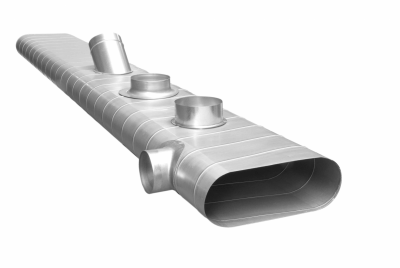2.1.4.1 Sheet quality
For the manufacture of galvanised air ducts, sheet steel is used with anti-corrosion zinc-based coatings, applied using the Sendzimir process, in the qualities:
- DX51D Z 275 MAC with a two-sided zinc coating of 275 g/m² according to
triangulation test (average thickness of 20 microns per side). Sheetquality/zinc quality according to NEN-EN 10346, tolerances according toNEN-EN 10143. - DX51D ZMA140 AC with 140 g/m² double-sided zinc coating according to
triangulation test (average thickness of 10 microns per side). Sheetquality/zinc quality in accordance with NEN-EN 10346, tolerances inaccordance with EN 10143.
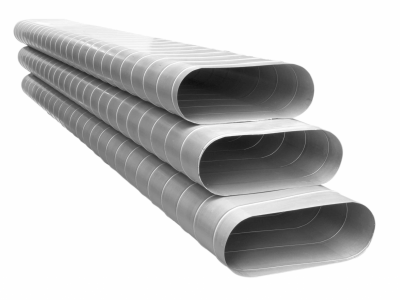
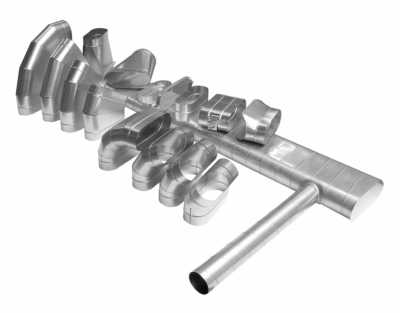
2.1.4.2 Sheet thickness
Sheet thickness of oval ducts
Galvanised air ducts are manufactured with a sheet thickness that depends on the largest duct side, as specified below. With this thickness the ducts are manufactured in such a way that they are sufficiently rigid to withstand deformation and troublesome vibrations. The minimum sheet thickness is based on the largest duct side: to

Sheet thickness of oval fittings
The following sheet thicknesses are used for the most common dimensions Starting from the largest duct side, the minimum sheet thickness is applied:
(This depends on the method of manufacture of the fitting).

Tolerances
The maximum tolerance for the length of a straight duct is 0.005 x L The tolerance for oval ducts is +0 to +13 mm
The maximum tolerance for angles is 20°.
The tolerance for the oval fittings is -2 to -13 mm
2.1.4.3 Connection in oval ducts
The connection in oval ducts depends on the manufacturer. The following forms occur:
- Flat flange
- Weld seam
The aim is to obtain sufficient stiffness and airtightness.
2.1.4.4 Connection in fittings
The connection of the seams in fittings is carried out in such a way that sufficient stiffness and airtightness is obtained. This connection is executed by welding or flanging. Damage to the zinc layer, which could cause rust, should be carefully touched up with an anti-corrosive paint.
2.1.4.5 Length of oval ducts
Depending on the manufacturer, the ducts can, in principle, be made in any desired length. For technical reasons, the length is usually not less than 300 mm.
2.1.4.6 Oval duct dimensions and equivalent diameters
The ducts are executed in standard dimensions as given in CEN draft nov 2004 /no 00156091. See table below. Equivalent diameters are in brackets.
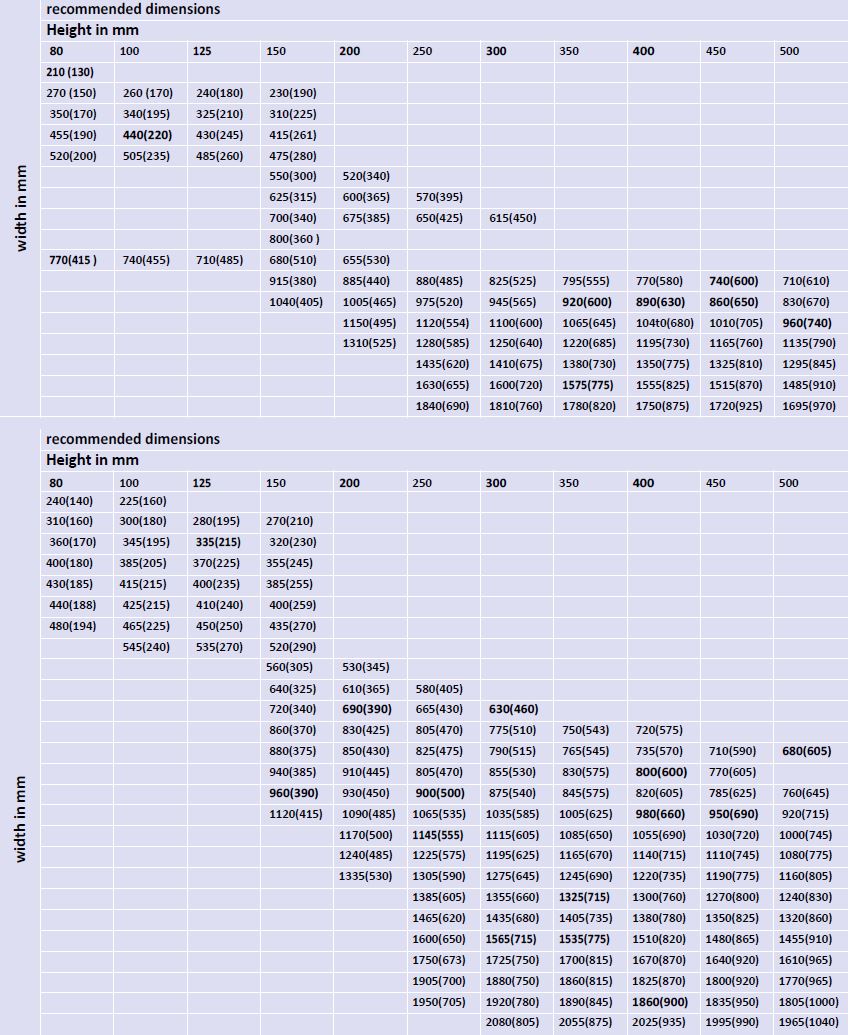
2.1.4.7 Bends
Horizontal
As regards form, bends are carried out as standard with a radius measured across the centre of the bend and equal to the width. Standard bends are made in angles of 15°, 30°, 45°, 60° and 90°, in a segmented version with a tolerance of ± 2°.
Segment bends ≥45° consist of a minimum of 3 segments.
Vertical
As regards form, bends are carried out as standard with a radius measured over the centre of the bend and equal to the width, with the exception of diameters 63 and 80 for which the radius is 100 mm. As standard, bends are produced in angles of 15°, 30°, 45°, 60° and 90°, in a segmented version with a tolerance of ± 2°.
Segment bends ≥45° consist of at least 3 segments.
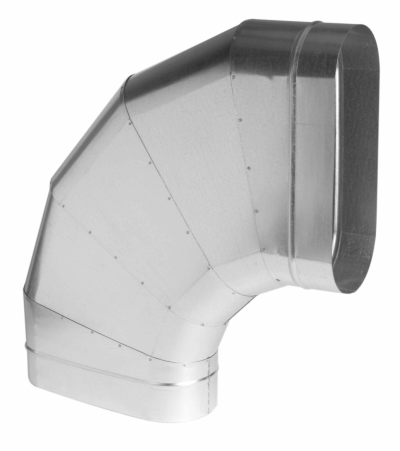
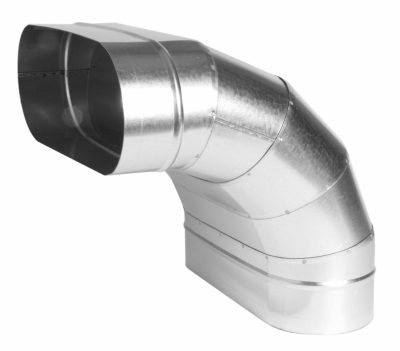
2.1.4.8 Adapters (oval-oval / oval-circular / oval-rectangular)
Adapters can be either symmetrical or asymmetrical (both x-axis and y-axis) and have a top angle of minimum 15° and maximum 60°. Symmetrical adapters are used as standard.
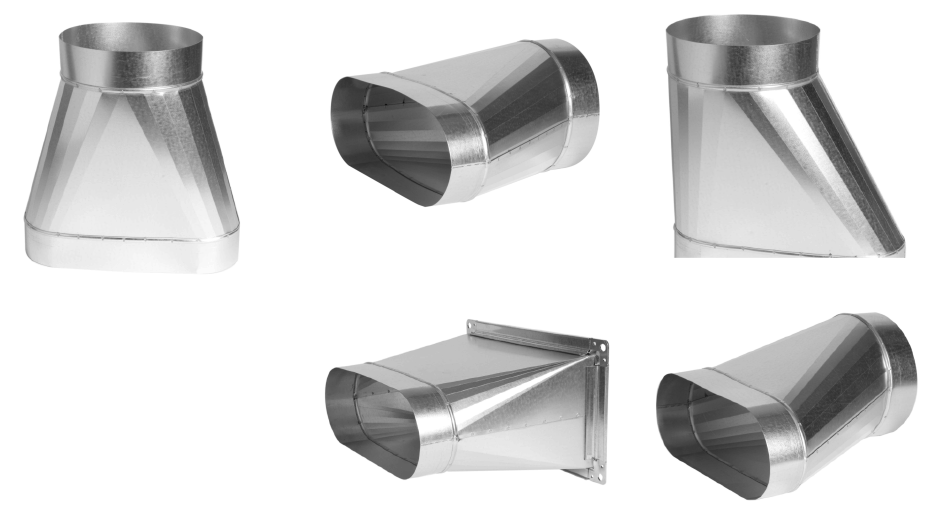
2.1.4.9 Branches (circular or oval)
A branch (split off from a continuous main duct at height side) can be established by means of a:
- saddle piece, in combination with straight pipe (circular and oval);
- T-piece, as a complete fitting (circular or oval);
- cross-piece (circular or oval) and can be executed as standard in angles of 90° and 45°. Designs with an angle < 45° should be avoided for technical reasons. On the width side of the duct, a branch (circular) can also be made by means of a flat saddle piece. Both in 90 and in 45 degrees.
